Types of viburnum: 16 evergreen and deciduous varieties for your plot
Our favourite types of viburnum make brilliant garden shrubs with their mix of flowers, fiery foliage and colorful berries

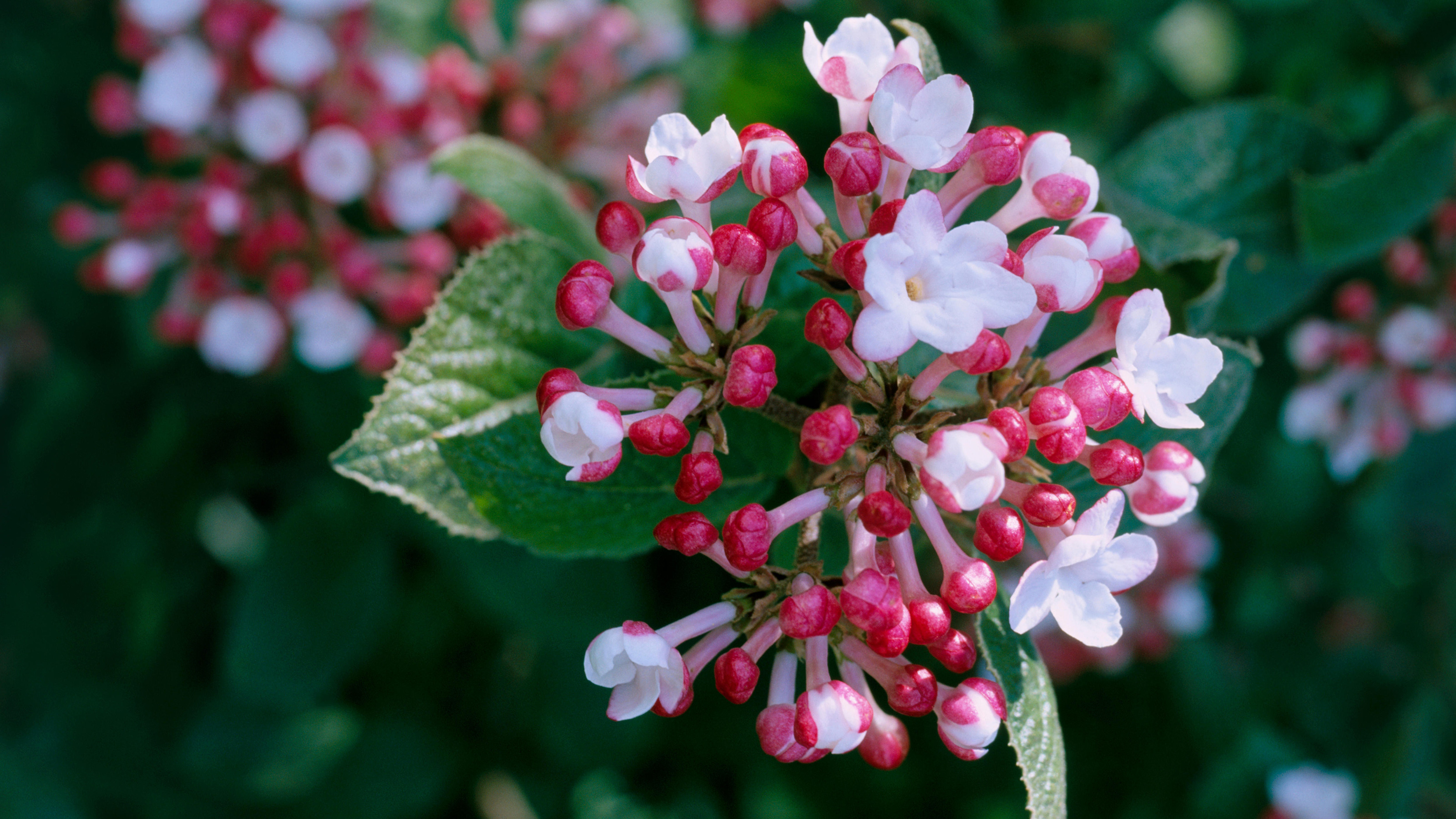
If you're searching for types of viburnum to plant in your garden, we're here to help. They’re undoubtedly amongst the best of all garden shrubs, but they never actually come out top of anyone’s list. Perhaps it’s because they have too many different ways of being special, rather than just one or two.
For some varieties, it’s the scent. Choose well and in almost every month of the year your garden will be filled with fragrance. And it’s not as if the flowers are hidden away. It's worth learning how to grow viburnum even if your favorite variety has no scent at all, as those with white flowers opening from red or pink buds are especially pretty.
Then after the flowers come the fruits. And the range of colors is probably wider than that of any other shrub – almost a rainbow of colours: red, orange, yellow, blue, indigo, violet.
Attractive foliage is a feature of some varieties and bold evergreen foliage or leaves that turn fiery in the fall usually come as additions to other good qualities. Some make dramatic specimen plants, either for their imposing presence or their striking branching structure. Others are very effective as ground cover, preventing annual weeds becoming established under their low dense evergreen foliage. Many types of viburnum combine two or more of these features to create indispensable shrubs for your borders.
One thing to remember is that all types of viburnum will produce a better crop of fruits, more reliably, if more than one variety of the same type is planted near to one another. It’s like apples, most of which will only fruit well if another variety is planted close by. Viburnums don’t insist on a pollinator, but they will fruit better if you or a neighbor has one nearby.
Add these types of viburnum to your plot for added scent and color
Reliable and low maintenance shrubs, these types of viburnum will add interest to garden borders big or small.
1. Viburnum x bodnantense 'Dawn'
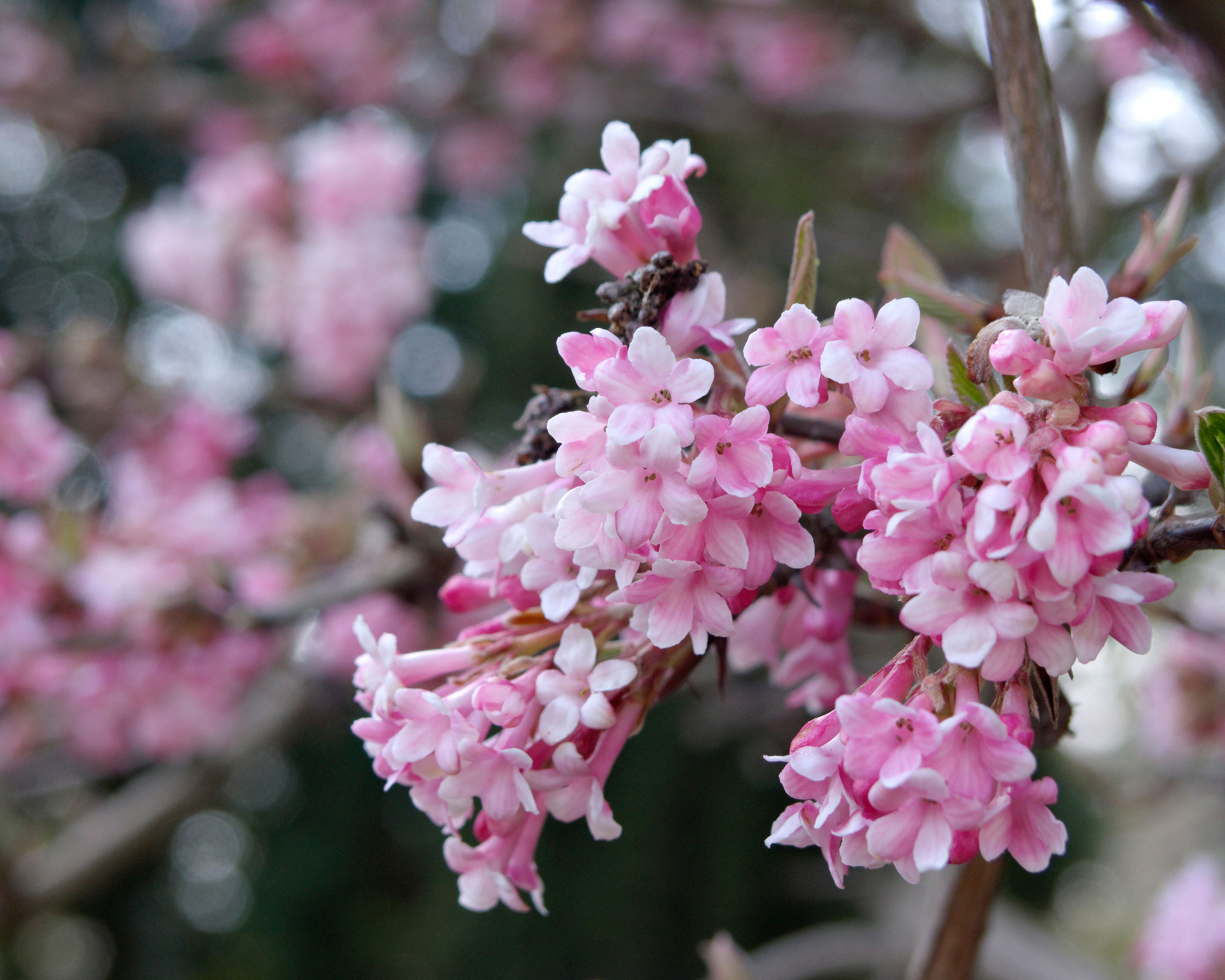
Flowering from fall into late winter, the surprisingly frost-resistant blushed white flowers have a strong scent. The less often seen ‘Deben’ is also pretty, with white flowers opening from pink buds. This variety is deciduous and will grow to around 6ft (1.8m).
2. Viburnum x burkwoodii 'Mohawk'
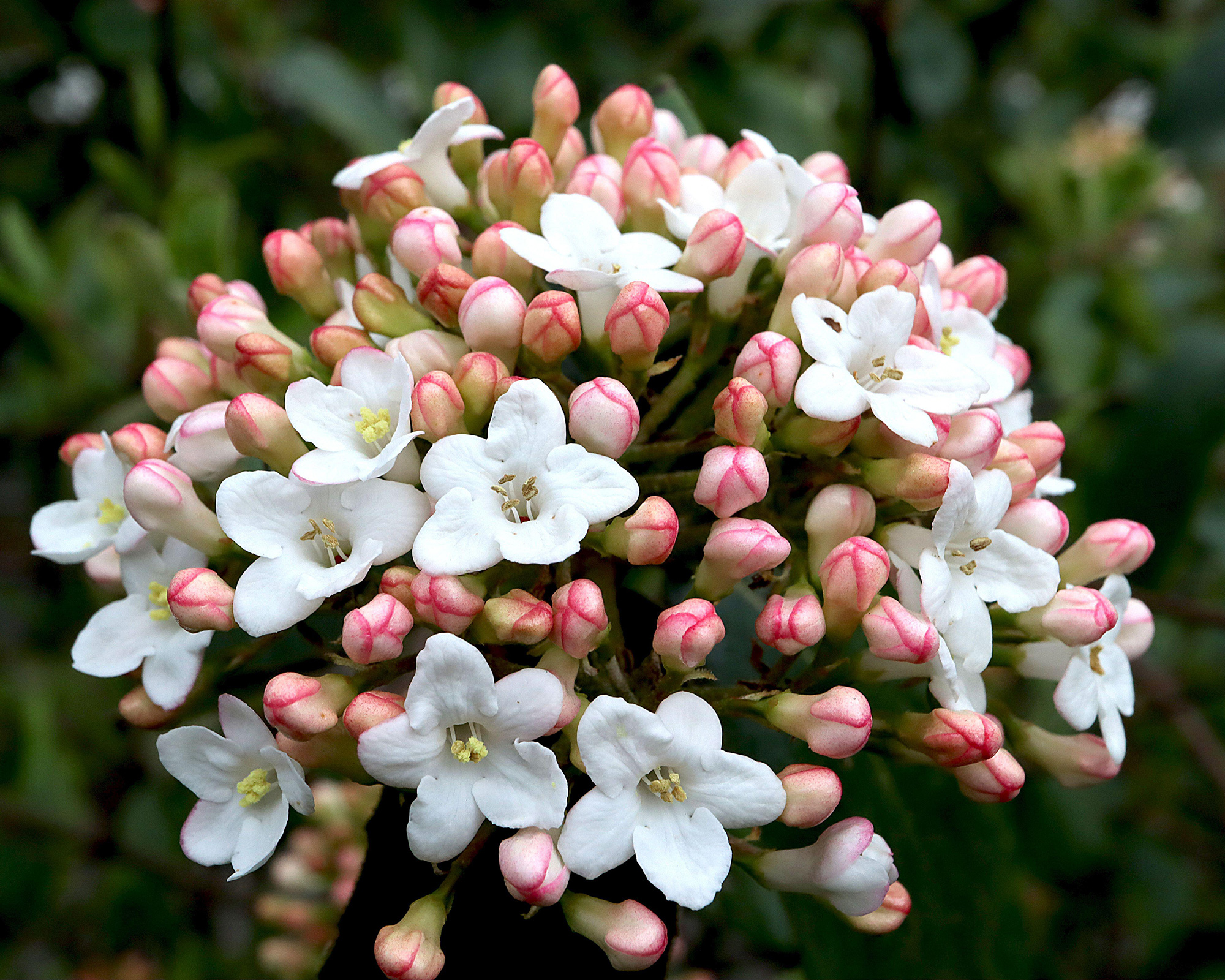
From January to May, white flowers open from contrasting red buds, all set against glossy foliage that turns red in autumn. ‘Anne Russell’ is more often seen and has pink buds for a softer look. An evergreen variety that grows to 5ft (1.5m).
There are plenty more suggestions for the best evergreens that are easy to grow in in our guide too.
3. Viburnum opulus 'Compactum'
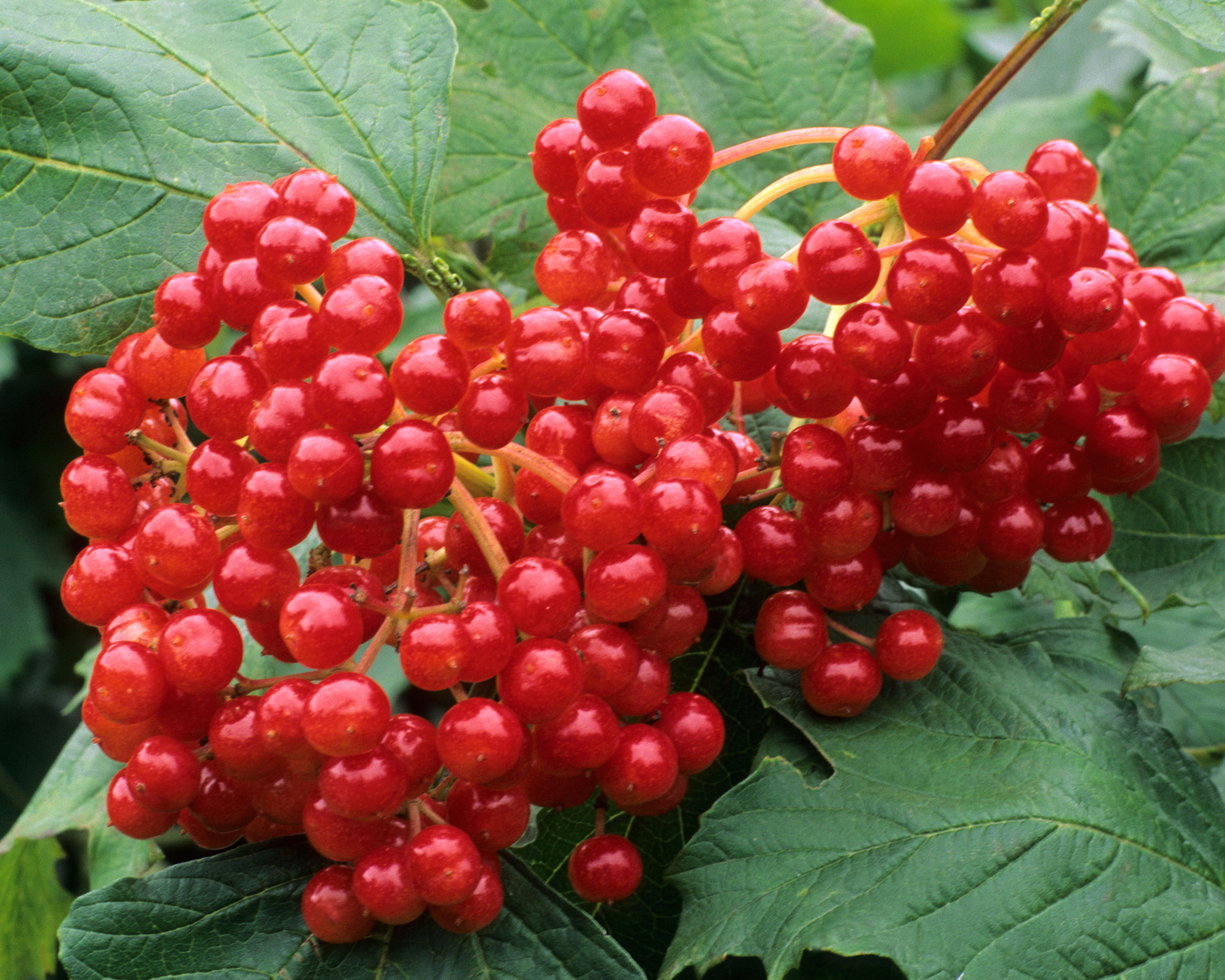
A neat growing version of the hedgerow guelder rose, the unusually long lasting scarlet fruits follow white lacecap flowers. It's deciduous with dark, maple-like foliage in the height of summer. Eventual height is 4ft (1.2m).
You'll find plenty more suggestions for the best plants for autumn berries in our guide.
4. Viburnum plicatum f. tomentosum 'Cascade'

Dramatic horizontally tiered branches are crowded with distinctive white lacecap flowers in May and June, making the whole plant look like a wedding cake.
The less distinctive ‘Mariesii’ is more often seen, and has red autumn leaf colour. It's deciduous and reaches 5ft (1.5m).
5. Viburnum x hillieri 'Winton'
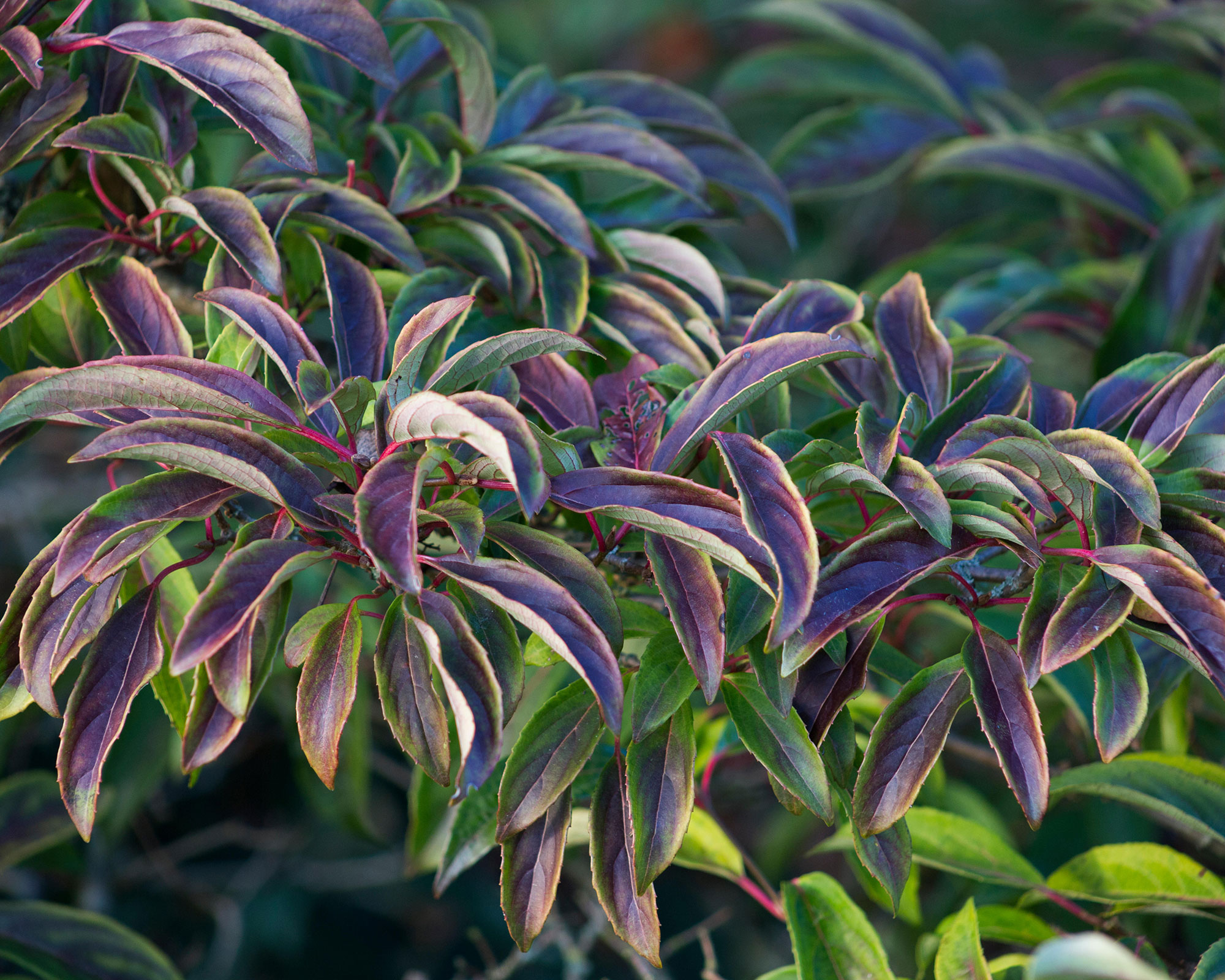
Oval leaves open with coppery tints in spring and mature through dark green to develop plum-red winter tones, with sprays of white flowers on bright orange-red stalks in June and red winter berries maturing to black. Semi-evergreen, it grows to 10ft (3m).
6. Viburnum sargentii 'Onondaga'
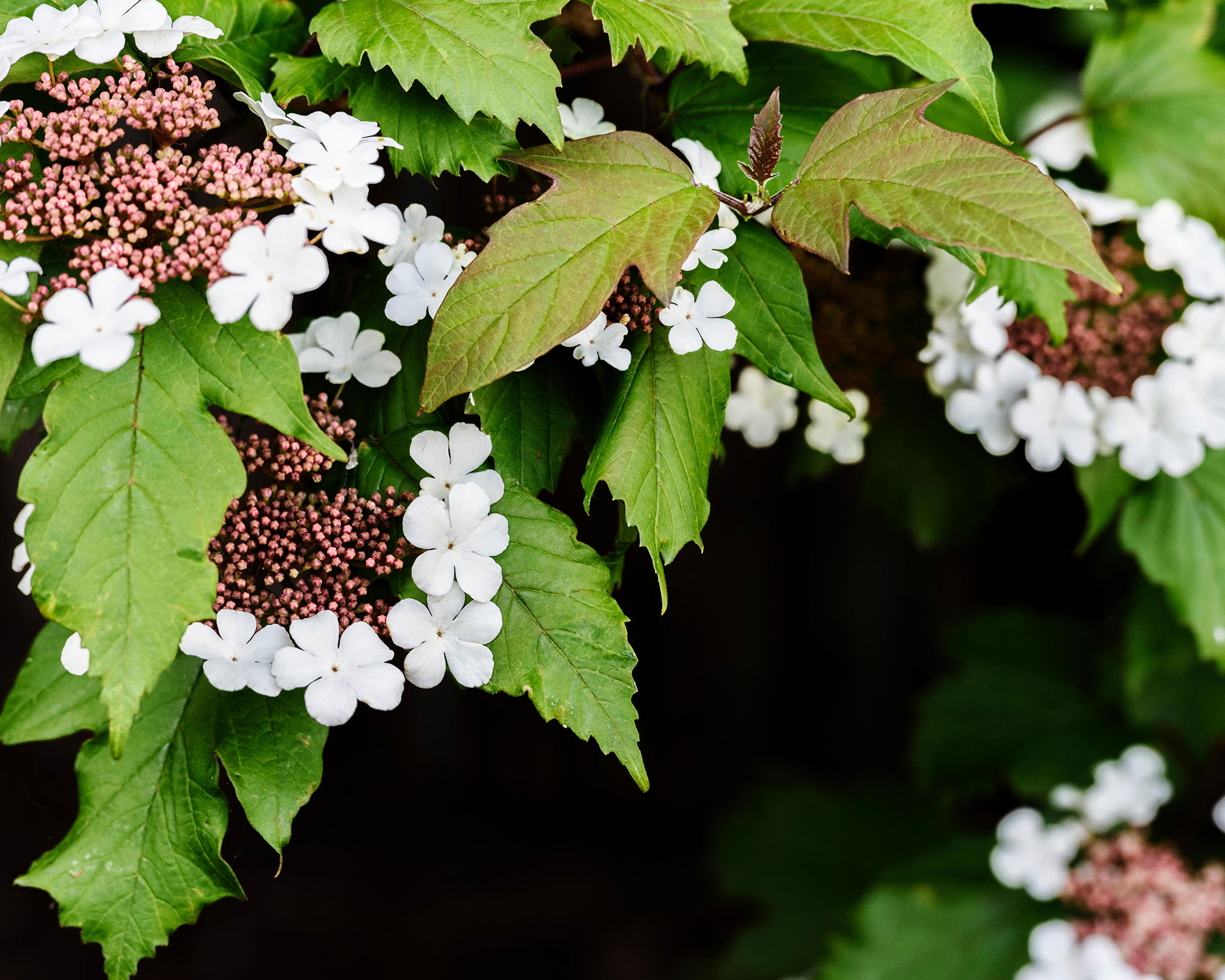
A lovely plant with large, maroon, maple-like new foliage turning purplish in fall with deep red buds opening to white flowers that develop into translucent red berries. Deciduous and an eventual height of 5ft (1.5m).
7. Viburnum plicatum f. tomentosum Kilimanjaro Sunrise (‘Jww5’)
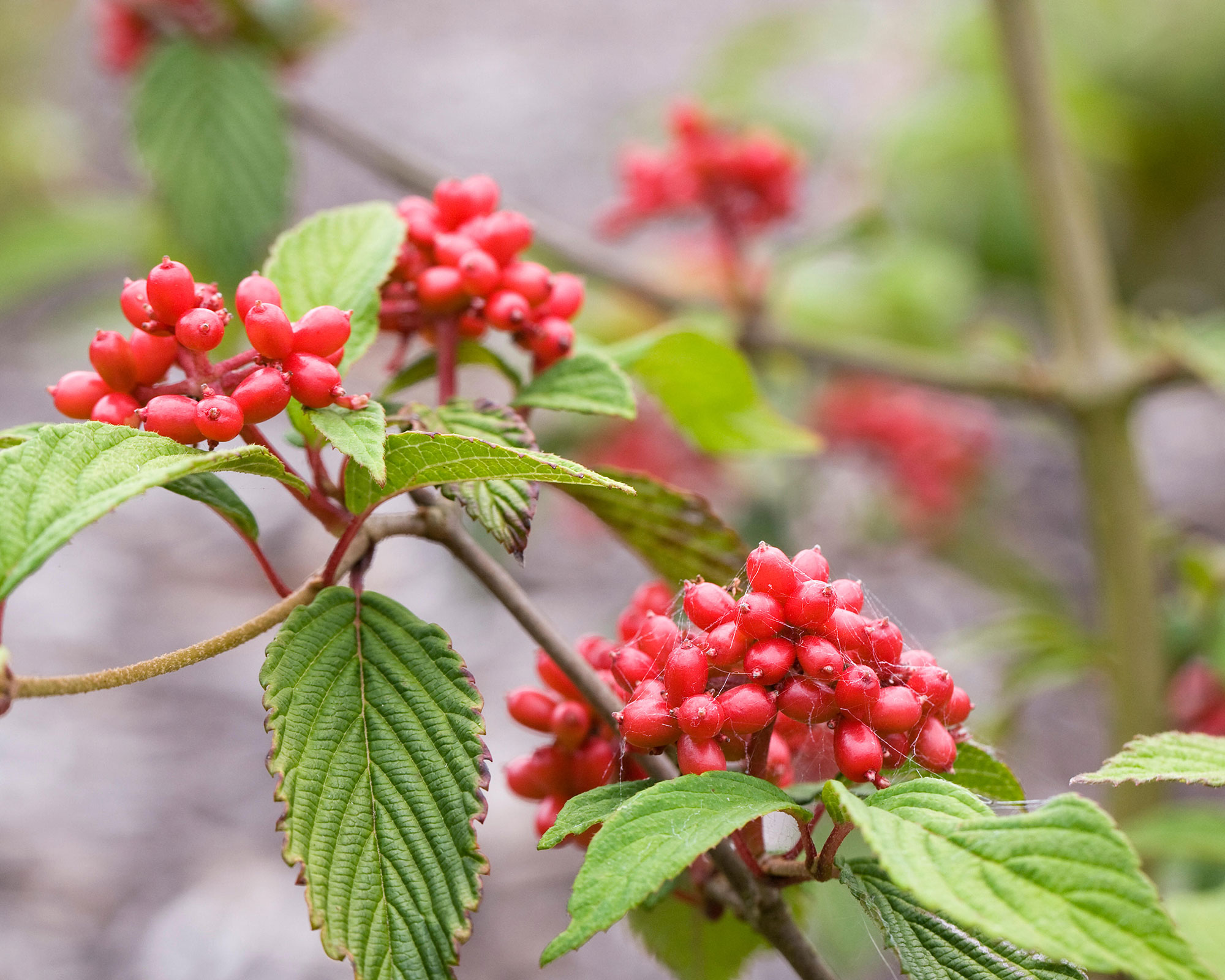
White flowers in late spring and early summer are blushed with pink as they mature, then red fruits ripen to black alongside the red-purple fall color. More upright than other forms, this deciduous viburnum was voted RHS Chelsea Plant Of The Year in 2015. It grows to 10ft (3m).
8. Viburnum tinus 'French White'
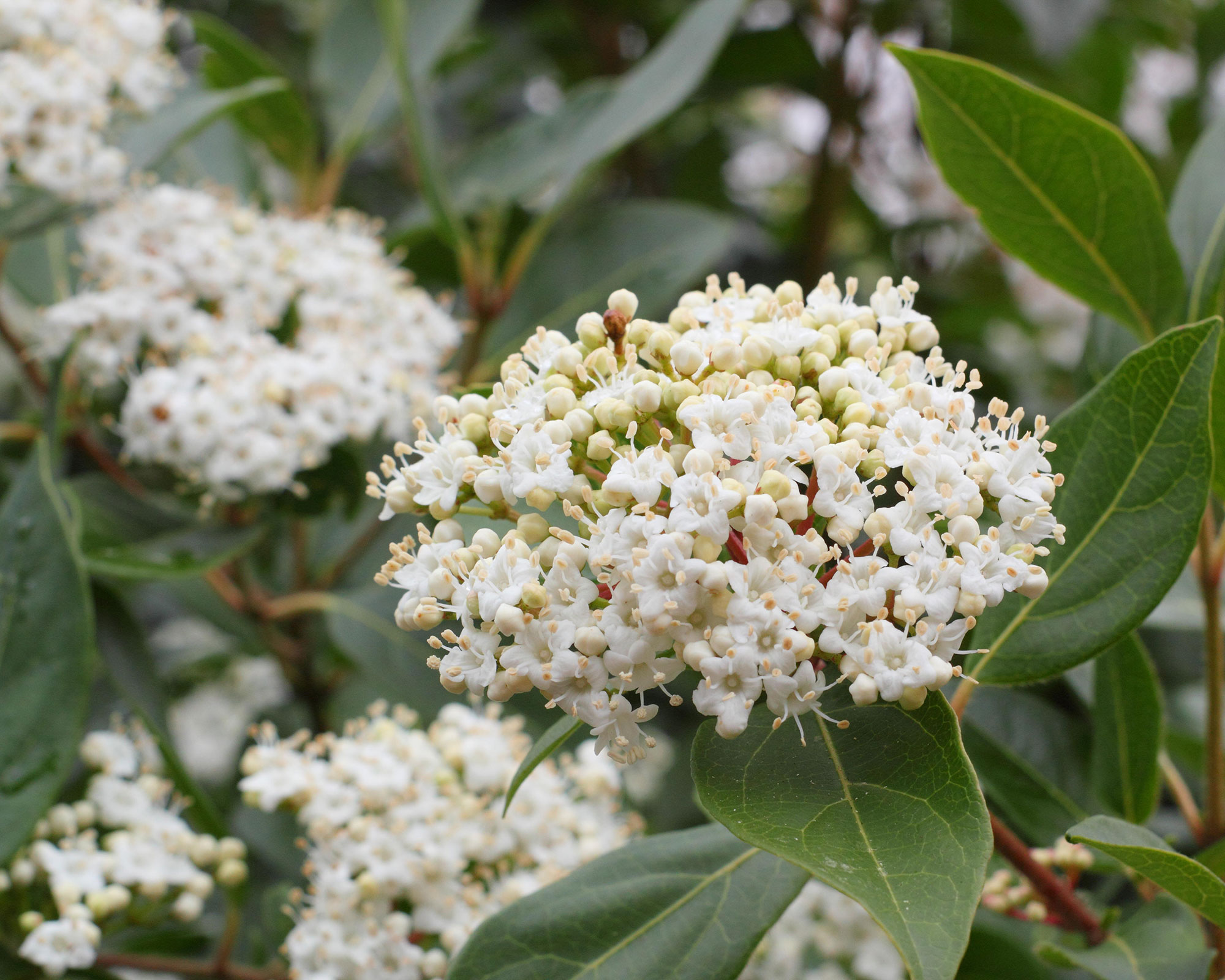
A splendid, tough evergreen with the white winter flowers opening from white buds to contrast with the dark green foliage. Metallic blue fruits mature to black. Grows to 10ft (3m).
‘Eve Price’ (see below) is more compact if you want an option for small gardens.
9. Viburnum opulus 'Roseum'
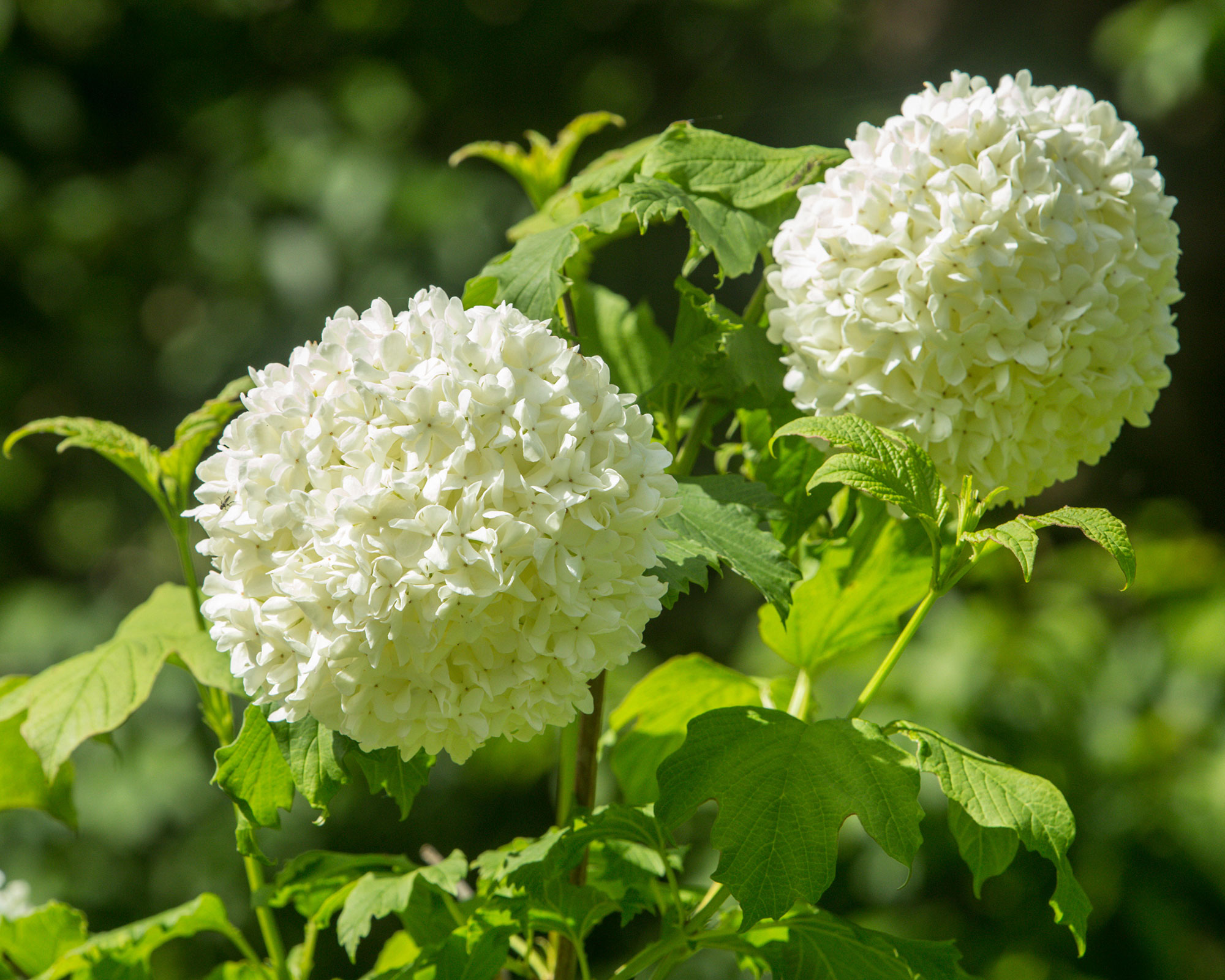
If you're looking for white flowering shrubs to suit your garden color schemes, this type of viburnum is worth considering. Showy, creamy white, sterile flowers are gathered into more or less spherical clusters and with purple autumn foliage – but no berries. Oddly named as there is nothing rosy about it!
This deciduous option is a vigorous grower, reaching an eventual height of 15ft (5m) but can be easily pruned. It also grows well in wet soil.
10. Viburnum carlesii 'Aurora'
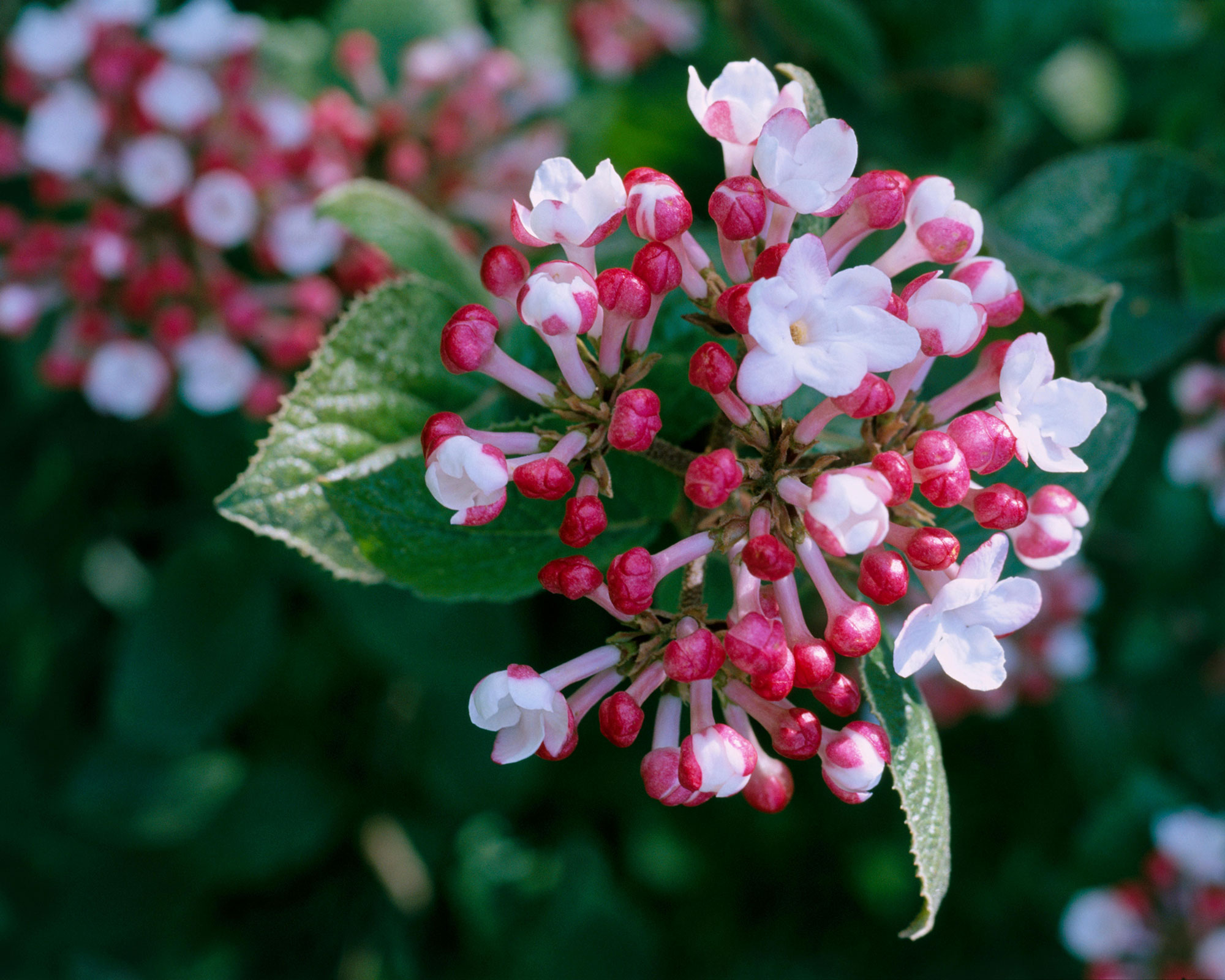
Almost intoxicating in mid to late spring when the red-budded white flowers open, followed in fall by black fruits and richly fiery leaf colour. Deciduous, it reaches 5ft (1.5m). ‘Diana’ is more compact, with purple-tinted young growth.
11. Viburnum x bodnantense ‘Deben’

This fast growing variety is known for its fragrant flowers. Deciduous and winter flowering, sometimes starting as early as October and continuing until spring, clusters of pink buds open steadily, bursting into heavenly scented white flowers. Eventual height is around 6.5ft (2m).
12. Viburnum nudum ‘Pink Beauty’

Creamy white, early summer flowers are followed by a prolific display of vivid pink berries eventually turning dark blue, each cluster a mixture of colours as they mature. You can see the berries more clearly when the pretty fall leaves drop. Height is 5-6.5ft (1.5-2m).
13. Viburnum tinus ‘Eve Price’
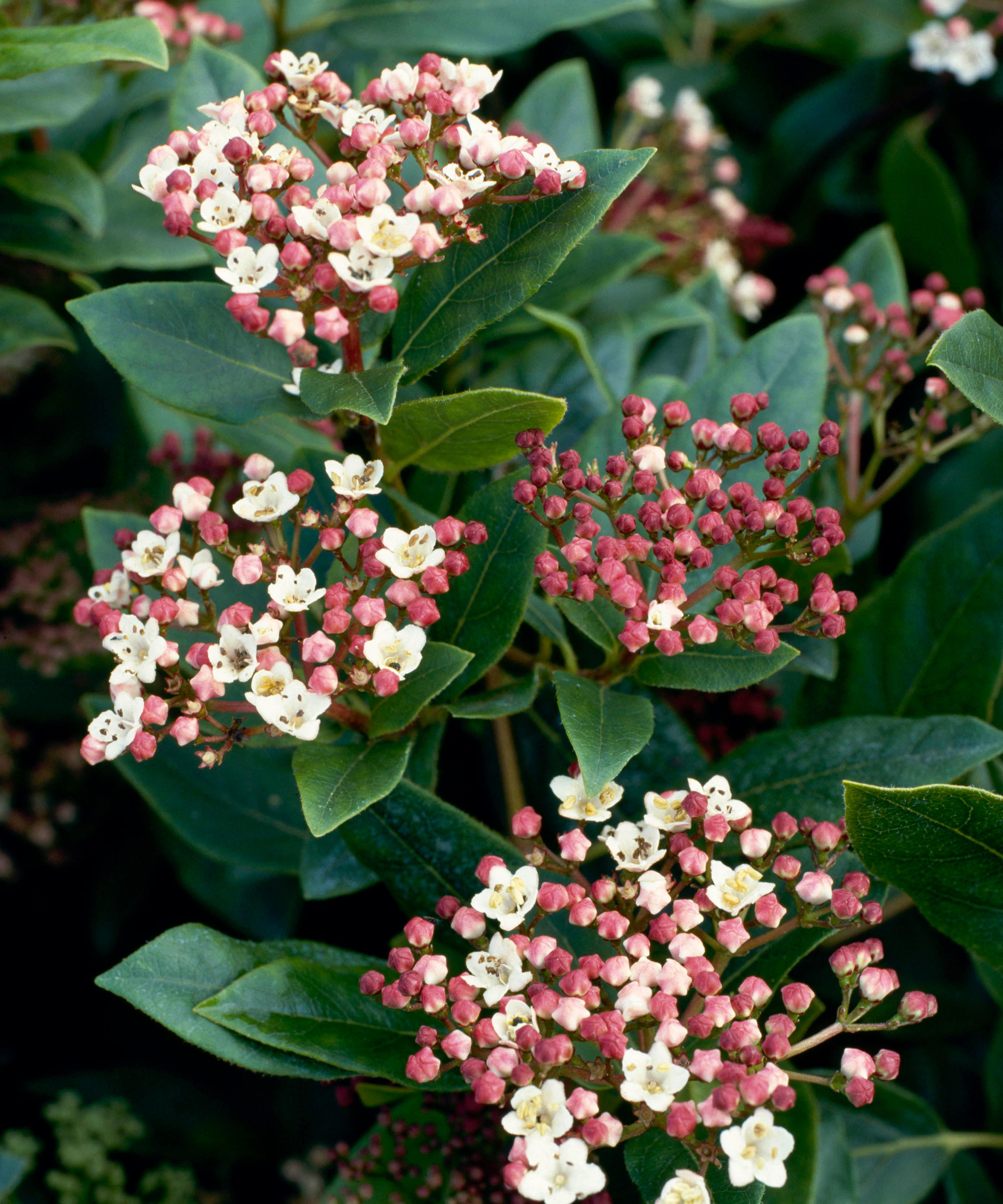
A compact and dependable form of this bushy, shade-loving, glossy, small-leaved evergreen with deep pink buds opening to blushed-white flowers through autumn into spring. This is followed by metallic blue berries that eventually turn glossy black. Height is 5-6.5ft (1.5-2m).
14. Viburnum opulus ‘Notcutt's Variety’
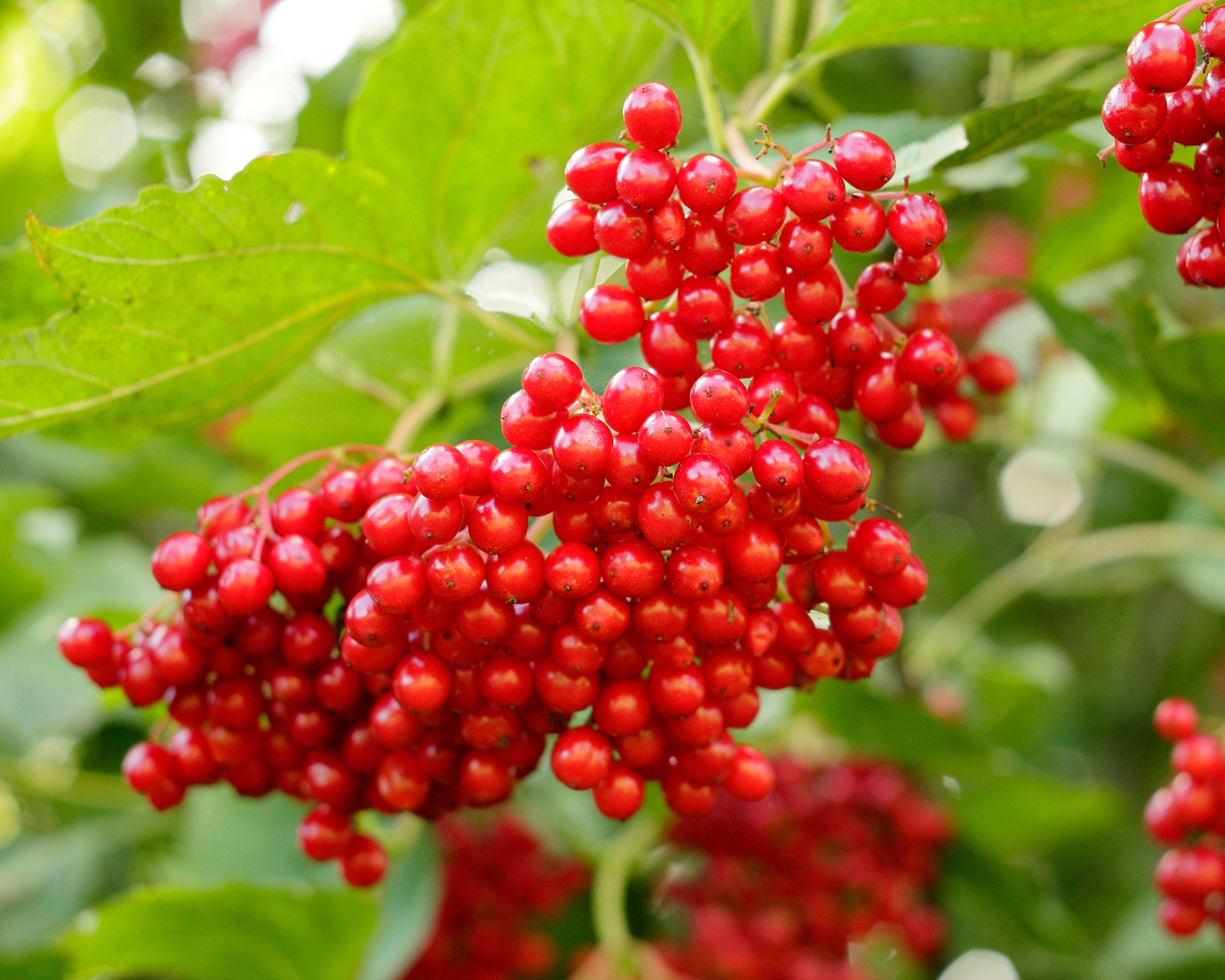
This large, rounded shrub features clusters of white flowers and long lasting translucent red berries. The glossy leaves turn orange and red in autumn too, and this variety grows as tall as it is does wide. The common name for it is guelder rose. Height is 10-13ft (3-4m).
15. Viburnum davidii
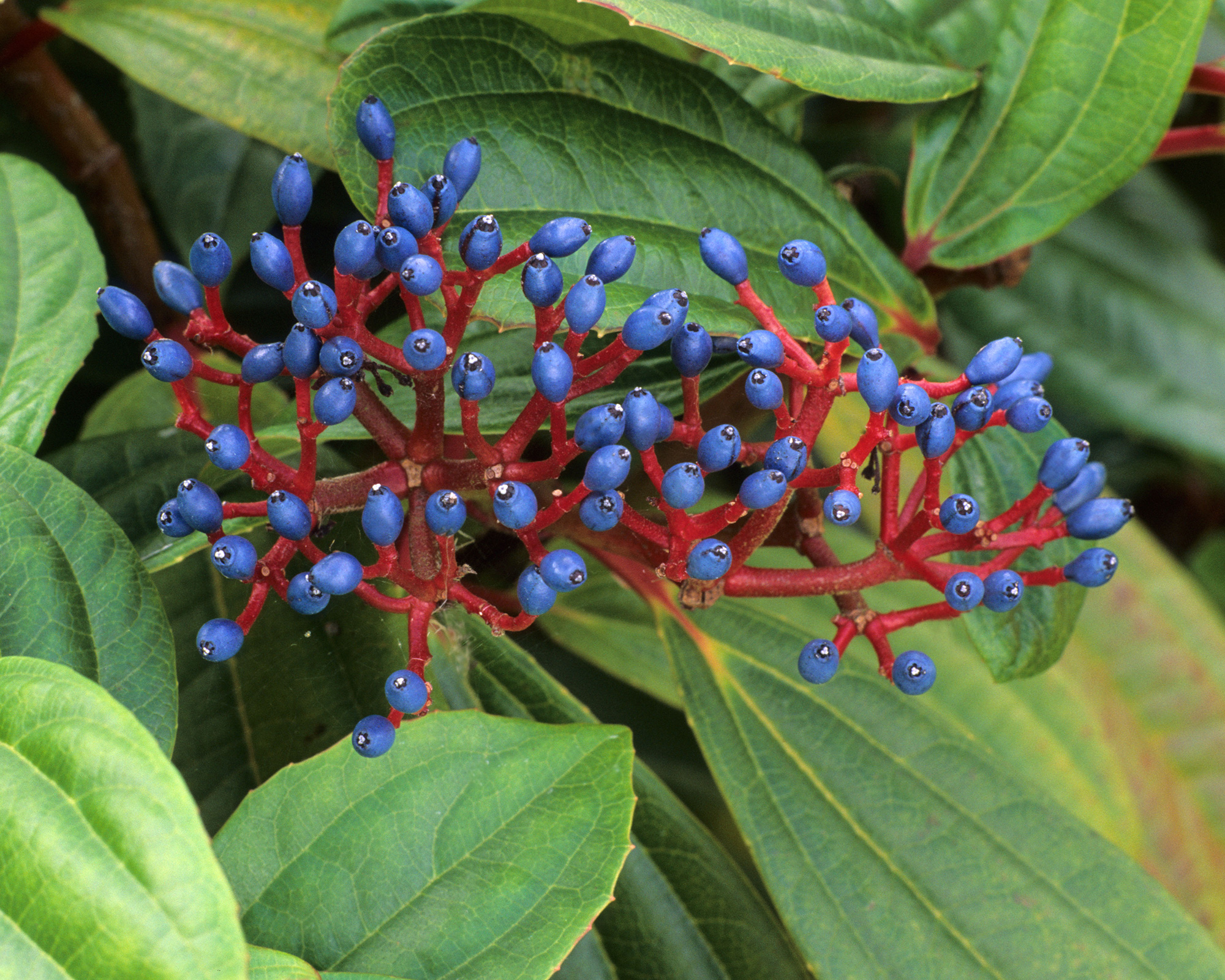
Low, spreading, evergreen ground cover with bold glossy foliage, white flowers are followed by brilliant turquoise berries that slowly turn darker. Needs male and female plants to fruit, the best nurseries will sell them separately. Height is 3-5ft (1-1.5m).
There's plenty more suggestions for the best ground cover plants in our guide.
16. Viburnum betulifolium

Add drama to autumn and winter garden ideas with this stunner. The white flowers of summer are followed by glistening red berries like redcurrants, weighing down the branches with heavy dropping clusters and lasting well into winter. Height is around 6.5ft (2m).
What plants go well with viburnum?
- Aster If you're learning how to grow asters and want a good companion for diferent types of viburnum, try mildew-free blue-flowered types like ‘Mönch’, or pinks like ‘Ochtendgloren’ look well with viburnums’ purplish autumn foliage.
- Brunnera The large, bold silvery heart-shaped foliage of ‘Alexanders Great’ makes great cover under deciduous viburnums.
- Clematis Try ‘Nelly Moser’ to twine through and flower with the viburnums, or a blue viticella type such as ‘Wisley’ to flower in summer. There's plenty of tips on how to grow clematis in our guide.
- Crocus Planting C. tommasinianus to naturalise under deciduous viburnums and they’ll soon spread to make a delightful carpet.
Expert tips on planting viburnum
All types of viburnum are happy in soil that’s neither dry nor waterlogged. They’re also tolerant and adaptable and don’t need much, if anything, in the way of pruning. It's easy to plant and care for them with these expert pointers:
- Viburnums are long-lived so prepare thoroughly before planting.
- Enjoying full sun or a little shade, viburnums are happy in any good soil that’s neither parched nor waterlogged. Find out about soil types in our guide.
- Plant two different varieties of the same species to encourage fruit setting.
- If necessary, remove the oldest branches after flowering or in winter to reduce a plant’s size.
- Over large plants can be rejuvenated by cutting back severely in late winter.

Graham Rice is a garden writer who has won awards for his work online, and in books and magazines, on both sides of the Atlantic. He is a member of a number of Royal Horticultural Society committees and the recipient of the 2021 Garden Media Guild Lifetime Achievement Award.
